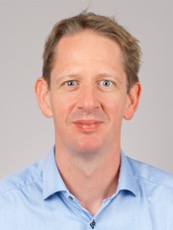Recent developments in synchrotron radiation facilities and X-ray optics have further expanded the X-ray analytical toolbox for operando studies. These X-ray tools allow to follow the structure of the catalytic active site in action with high time-resolution and include X-ray absorption and emission spectroscopy, diffraction and total scattering. One of these tools, quick scanning X-ray absorption spectroscopy (with sub second time-resolution) in combination with transient experimentation provides a unique platform for determining the nature of the catalytic active site and the rate limiting steps of a reaction.
In this talk, I will the present state-of-the-art in quick scanning X-ray absorption spectroscopy (XAS) and how this was leveraged to provide new insights into relevant catalytic processes under operating conditions: heterogeneous Wacker oxidation of ethylene, oxidative dehydrogenation of ethanol and the oxygen evolution reaction.
Maarten Nachtegaal
Paul Scherrer Institut, Villigen-PSI, Switzerland
Email: maarten.nachtegaal@psi.ch
Biography

Maarten Nachtegaal is heading the operando spectroscopy group at the Paul Scherrer Institut (Switzerland) which operates the SuperXAS beamline at the Swiss Light Source for X-ray absorption and emission spectroscopy and currently constructs the Debye beamline for combined X-ray absorption, diffraction and total scattering experiments. He earned his M.Sc. degree in geochemistry from Utrecht University (the Netherlands) a Ph.D. in environmental chemistry at the University of Delaware (USA) followed by a postdoctoral position at the ETH in Zürich (Switzerland) before taking up his current position. The focus of his research moved from environmental chemistry to heterogeneous/photo/electro-catalysis, primarily employing novel spectroscopic techniques under operando conditions. Recurrent themes are a strong interest in cross-disciplinary research and the development of new operando experimental methods.
Watch a recording of the presentation below:




